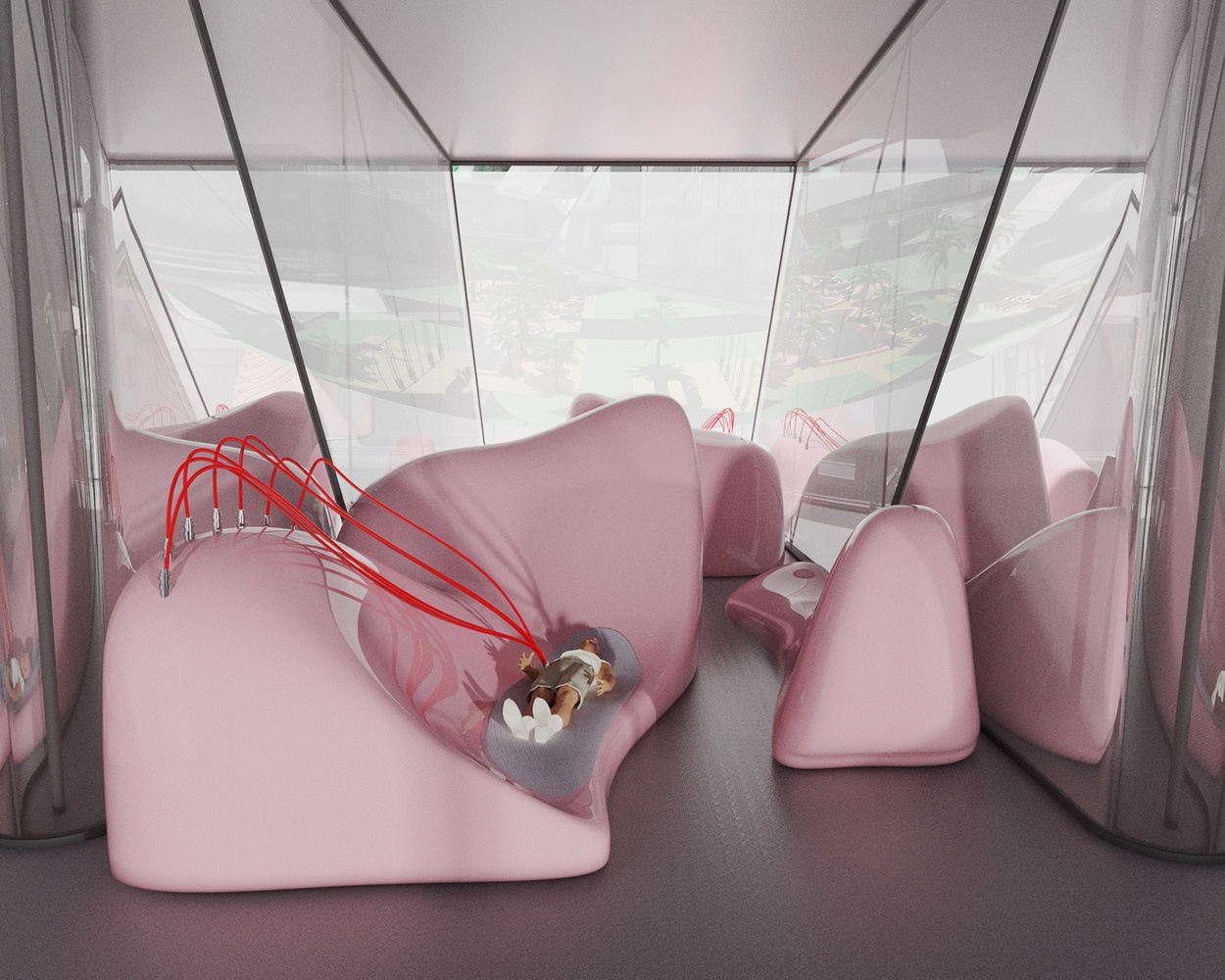The analysis of the “Love Island USA” show’s over-exposure and the hygienic and destructive culture around tanning salons, specifically tanning beds revealed vanity aspirations that seem to be ingrained in today’s society in various ways. The commodification of one ‘s body in context with reality TV, media, and social media is achieved by the modifying production of vanity through workouts, plastic surgery, dieting and nutrition, hair and makeup salons, tanning salons, steroid injections, dermatology or body-revealing fashion.
The building serves as an apparatus manifesting those aspirations and tools within one spatial context and situates the reality TV show at the center of it.
Users can be divided into two partitions: contestants who are on the reality TV show, and visitors who “aspire” to be on the TV show.
While Contestants enter for a term of 8 weeks through a separate entrance, visitors are able to enter, come and leave as they wish, however, their target is the commodification of their body as a vanity product and ultimately to get on the show and harvest its effects such as more popularity, fame or followers on social media.
While visitors are making use of the spaces such as the gym or plastic surgery, they are able to see through one-way mirrored glass all the way to the reality TV show, constantly having a view on the prize, or their targets: “the perfect commodified body.”
In this process, visitors move through the building using its different functions to enhance their visual appearance in a coordinated order, until their vanity is deemed perfect, and they have a chance to join the TV show at the center of the building.





